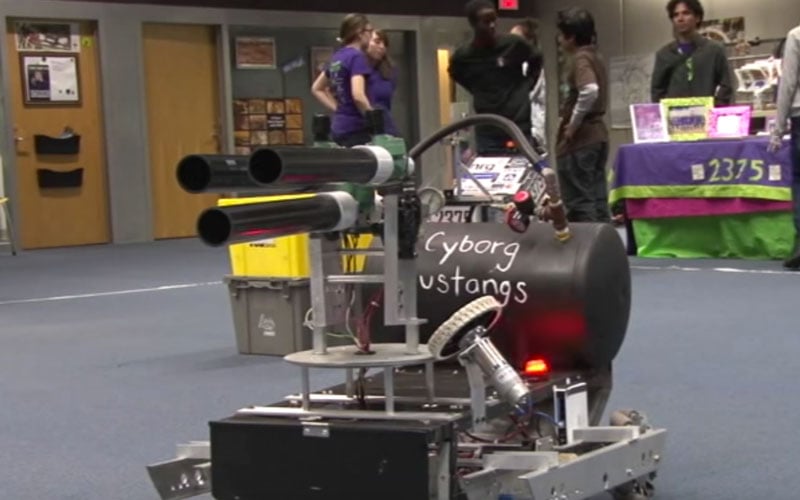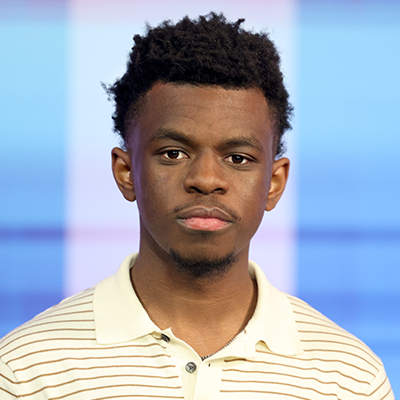
Desert Ridge’s Nano Jagwires are building success in the world of competitive robotics, with their eye on returning to the VEX World Championships. (Photo by William Wilson/Cronkite News)
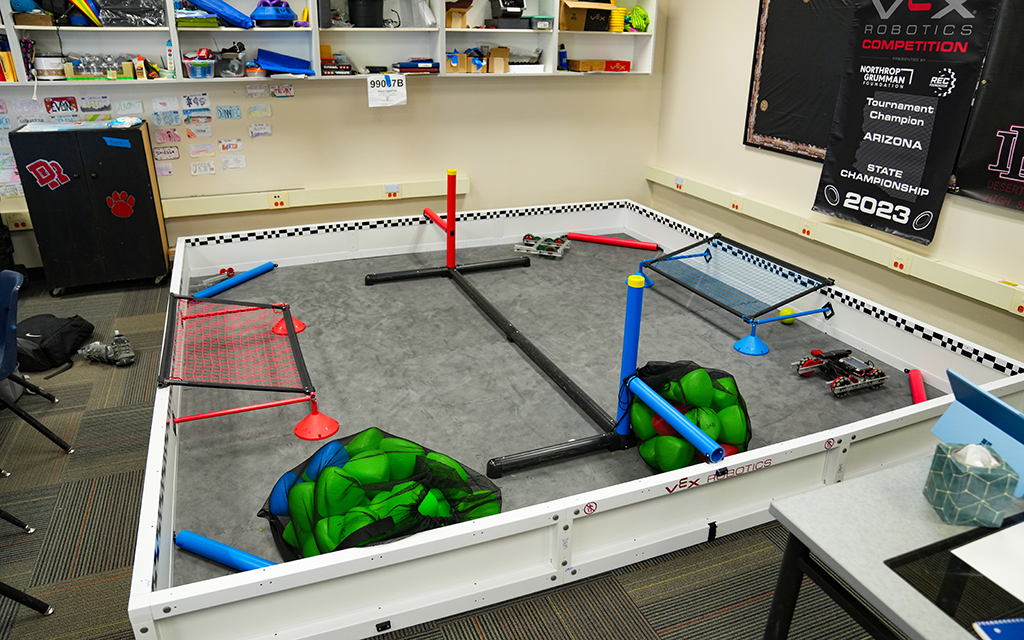
Desert Ridge High students fuse creativity with technology to complete among other high schools on the world championship stage. (Photo by William Wilson/Cronkite News)
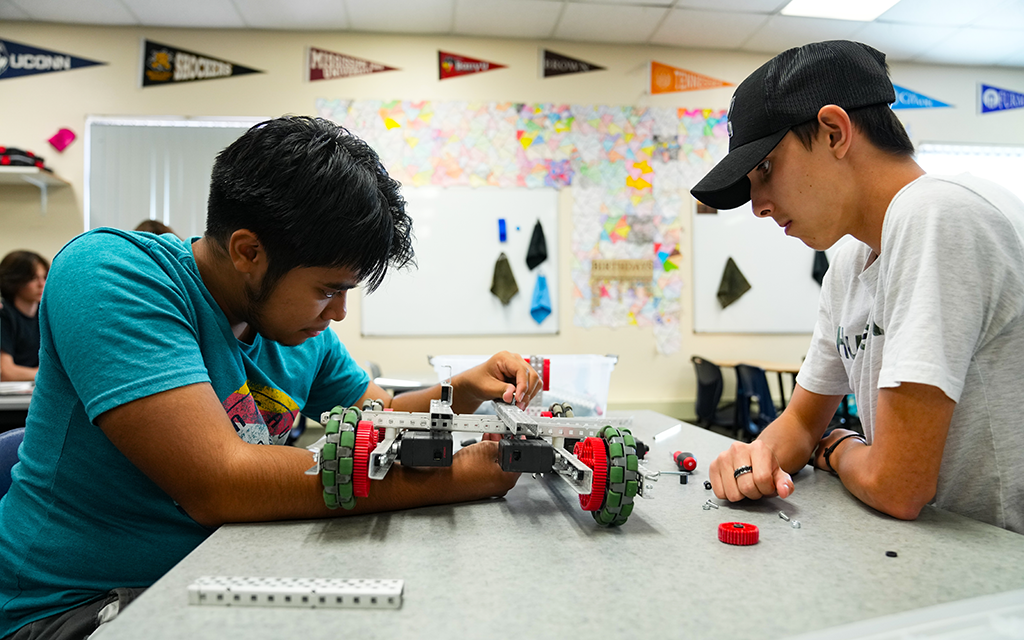
Preparation is in full swing as the Desert Ridge’s Nano Jagwires gear up to make another run at the VEX World Championships. (Photo by William Wilson/Cronkite News)
MESA – There have always been various ways for students to compete during high school, from football to field hockey, cheerleading to chess.
But a recent technological revolution is creating a new opportunity for students – competitive robotics.
The revolution has evolved worldwide since the inaugural VEX season in 2007, with more than 20,000 teams from around the world now competing against each other.
For one of Arizona’s best programs at Desert Ridge High in Mesa, everything happens in the back half of a traditional classroom after school, from programming and building to actually testing and competing with the creations of team members.
The front half of the classroom is what one would normally see in a math classroom, with formulas on the wall and plans for future lessons. The back of the room is filled with robotics equipment and a practice field with trophies and banners from previous years dressing the side and back walls.
Even though it may be a little unconventional, the Nano Jagwires make it work by taking advantage of every inch of space with many storage units and tools – most donated or student-created – fully utilized by the teams.
For many students in Arizona and across the world, robotics has become a pathway to get involved with fellow students and strive to be one of the best.
Abhinav Jinka, who’s in his third year of the program, enters his second year on the top team at Desert Ridge. He became more immersed in the scene when he started to talk to Carter Stevens, a teammate last year who has graduated, during their computer science class, where they would talk about strategies and discuss programming ideas.
Once Jinka began digging deeper into robotics, he “almost became addicted to VEX.”
“I’d sit here for hours on end because I love doing it, and I’m passionate about it,” Jinka said.
Desert Ridge has become one of the leaders in the state for robotics, with growing involvement and a successful track record.
Last year, the school’s top team, the Nano Jagwires 99067B, was crowned state champions and finished in the top 16 in the world at the 2023 VEX Robotics World Championship held in Dallas, Texas.
VEX is a robotics company owned by Innovation First, Inc. which organizes the worldwide competition, the largest of its kind.
There are different types and levels of competition, with students in elementary, middle and high schools each having their own divisions. Throughout the year, there are regional, state and national levels of competition, culminating in the VEX Robotics World Championship each spring.
VEX competitions don’t just bring a different type of competition but also lead to future innovators, with 95% of participants reporting an increased interest in STEM (Science, Technology, Engineering and Mathematics) subject areas and pursuing STEM-related careers, according to VEX.
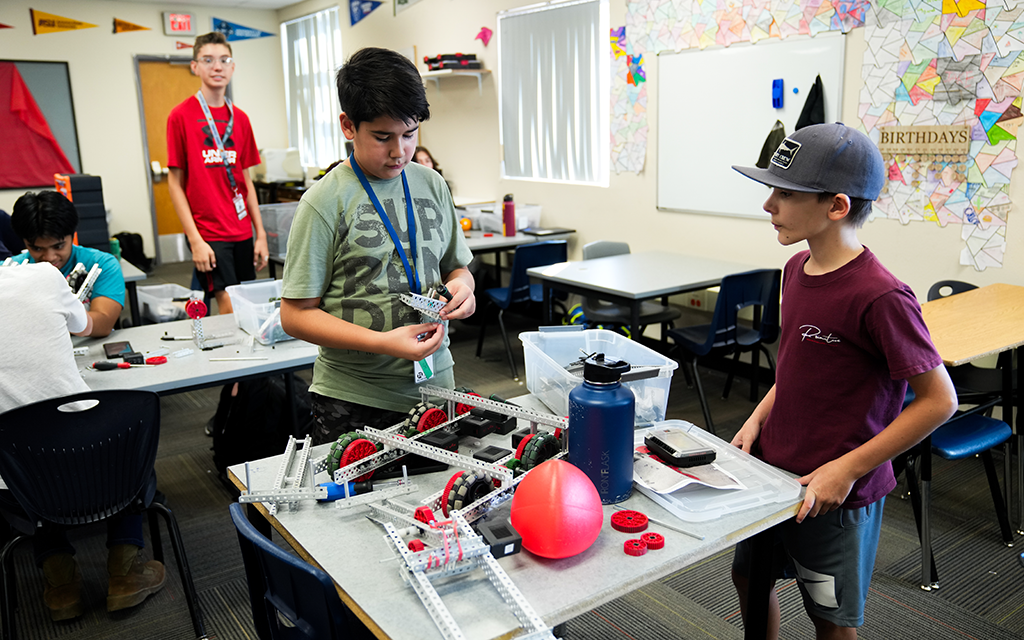
Competitive robotics is on the rise across the world, and Desert Ridge’s Jagwires are at the forefront in the Valley. (Photo by William Wilson/Cronkite News)
Each year, the game mode changes completely, from the types of ways teams can score points to the style of endgame strategies. It creates a consistent challenge for teams to build a new robot from scratch, as well as create an entirely new game plan and a new program for the autonomous portion of the match.
For Desert Ridge, the back half of current Desert Ridge robotics coach Wendi Harden’s classroom is the setting where each team’s robots are planned, programmed and created for that season’s competition. The room includes everything from the full-scale practice field in the back corner of the room to safe spaces to measure and cut metal. There are also toolboxes and 3D-printed battery holders with charger outlets.
This school year’s game mode is called Over Under, which includes three phases.
The first is an autonomous phase, during which the team can’t control the robot, which has been preprogrammed to put triballs (plastic, rounded triangles) into position for the second phase.
In the second part, the team controls the robot and tries to put the triballs under a goal. Points are awarded based on how many triballs each team gets under its goal, but teams can also try to block or remove their opponent’s triballs.
In the final phase, teams can score extra points in the final 15 seconds of the game by making its robot climb the team’s pole. Points are awarded based on the height the team’s robot reaches above the opponent’s robot.
Desert Ridge’s robotics program existed before its rise to one of the best schools in the state, but not in the same capacity. A former engineering teacher participated in VEX competitions with some of his students, but the team was uncompetitive due to working with only limited parts and missing key components such as aluminum and V-5 engines while using older steel.
Harden got involved with the program when her daughter became a freshman at the school. Harden had been teaching for a few years in the school’s mathematics department at the time. Her son was already involved in robotics at a different school, so she was familiar with how VEX worked.
“My daughter got involved, she wanted to be able to beat her brother,” Harden said. “So we needed to buy more parts, and I became more active. And then that’s kind of how it grew from there.”
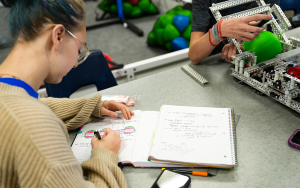
These students are not just building robots; they’re bringing their passion for VEX to life at Desert Ridge High. (Photo by William Wilson/Cronkite News)
Since taking the helm, the program has flourished into one of the best in the state, with three Jagwires (the high school’s mascot is Jaguars) squads finishing in the top 10 last year.
The enrollment has risen over the years, with Harden recruiting students from her classes who wanted to do more than join the program for fun.
They wanted to compete.
Now, more than 30 students from the Jagwires program, as well as local middle school students invited over by Hardin, meet up at Desert Ridge to work on robots and tinker with programming for upcoming competitions in the back of Harden’s classroom.
Harden had an idea of what to expect when she stepped in to help her daughter based on her son’s experience, but she became hooked after his team qualified for the world championships in the middle school division.
It opened her eyes to the scale of a new generation’s competition.
“You get the excitement when you walk in and there’s teams everywhere, stickers everywhere, people talking in different languages,” Harden said.
Harden said it can be challenging to explain robotics competition to parents and set expectations, and added that parents “don’t have an understanding until they’re actually at an event.”
Despite the gap, parents still support their kids, going as far to provide a home for their kid’s robot over winter break and hosting teammates over to build robots.
“Parents will come and just sit there and ask the kids, ‘Can we go home yet?’ And their kids are like, ‘No, mom, just one more thing. No, we don’t have the autonomous right. Just one more time,’” Harden said, adding: “Don’t get upset when your kid doesn’t get home until 10 o’clock on a Friday night. They are sitting in my room building robots.”
Many small and specific rules can make it difficult for parents to follow the games. The most common question is why the team can’t pick its partners for the entire event.
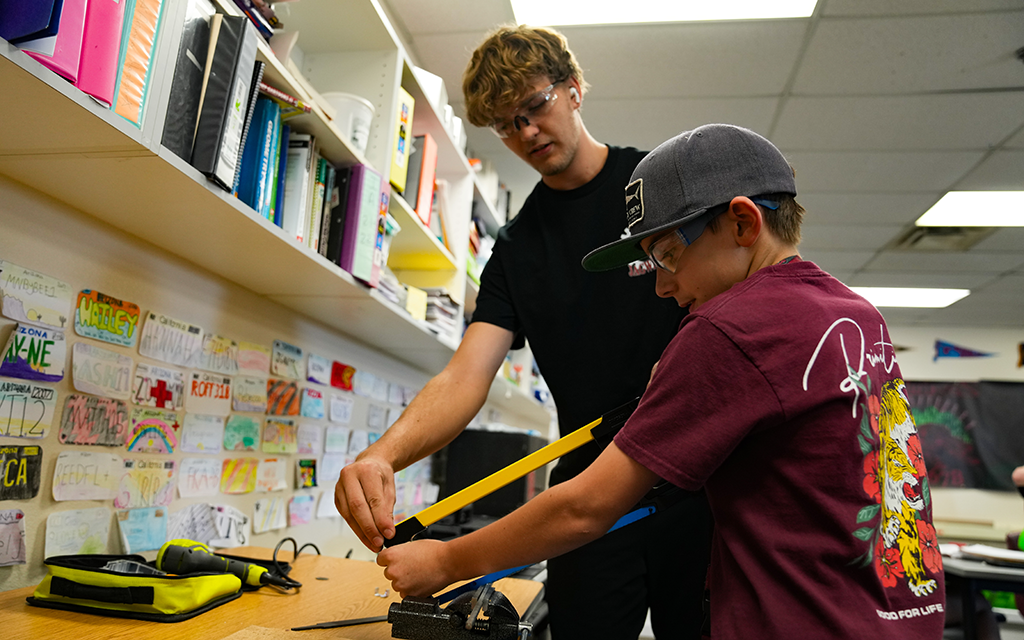
These students are not just building robots; they’re bringing their passion for VEX to life at Desert Ridge High. (Photo by William Wilson/Cronkite News)
VEX commentator Keegan Ohta – who has covered VEX events since 2017 in Hawaii, and has been a part of the world championship broadcasts for a few years – explained that teams don’t typically know their randomly assigned teammate until a day before at the absolute earliest, which can make it tricky to come up with strategies with partners for the event quickly.
The challenge is only amplified for the world championships, where the best teams from more than 10,000 teams and 40 countries come together for one of the largest competitions in robotics.
With teams traveling from around the globe, a language barrier adds another impactful layer. Teams often use Google Translate to discuss strategies with their partners during matches.
Ohta described robotics as the teams “putting thoughts into robots,” rather than thoughts onto a paper, something that shines when teams create unique robots and functions that stump enemy teams.
The best word to describe competitive robots that Ohta shared was “coopertition,” with teams having to work with given teammates while also competing to be the best team in the world.
The growth and success of the program hasn’t stopped Harden from trying to help surrounding schools build their own robotics teams.
Desert Ridge has started mentoring local middle school students who are interested in robotics by having them build and program robots in the same room as the high school students. This way, the middle school students can ask any building and programming-related questions and seek assistance in safely cutting metal pieces.
“It’s not only about going and experiencing it ourselves, it’s about helping others get a path there too,” Harden said.
As with all things, there is a financial aspect that can sometimes set teams apart from the competition. Harden’s rough budget for the program each year is around $10,000, which is all fundraised by the program through events such as car washes.
Some of the top teams in the world can spend upwards of $30,000 each year on their robot, a financial risk that does not always pay dividends.
Harden has led the charge in hosting VEX tournaments at Desert Ridge, the site of multiple events over the past few years, including the 2022 Arizona VRC Middle School State Championship and Arizona VRC High School State Championship.
Desert Ridge won’t be the site of the middle school championships this year, but is still slated to play host to several tournaments over the 2023-24 school year, including the Desert Ridge High School Turkey Trot Over Under tournament Nov. 18 and the 2024 Arizona VRC High School State Championship March 8-9.
In their second competition of the year Saturday, the Nano Jagwires won the 4th Annual Mountain Pointe VEX Robotics State Qualifier Tournament & Expo. In addition to winning the tournament, they also were awarded the Excellence Award for the high school division and were crowned the Robot Skills Champions.
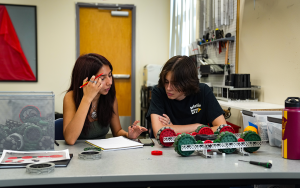
For Desert Ridge’s dedicated students, competitive robotics is more than a hobby — it’s a shared passion that drives them to excel. (Photo by William Wilson/Cronkite News)
Jinka, Parker Scott, William Buckner, Trishan De La Torre and Parker Wakefield make up this year’s team, with Buckner and De La Torre replacing Stevens and Jace Reed, who graduated last year.
Jinka has maintained the role of head programmer, Wakefield and Buckner are the head builders, De La Torre is their notebooker who documents the design, strategy and creating process and Scott is the team’s driver.
Scott got involved his sophomore year and is now in his second year with the main team. Last year, he was one of the team’s main builders and assisted with their programming, and now steps in as the team’s new driver.
Scott is taking over the driver role from Stevens, who drove for the main team for three years, after being a part of the building and programming teams in last year’s roster.
The junior got into robotics, like many current VEX members, by watching the show Battlebots, a robot combat competition that has circled through several TV networks since its first airing over two decades ago.
The team is deep into its preparation for the season’s first event in the new game mode, practicing their autonomous function for the beginning of each match, as well as finishing some modifications on their robot.
An advantage the Nano Jagwires will have this season is their experience and knowledge as one of the only teams in Arizona this season to have an entire squad with experience at the worlds.
Last year’s overall performance and finish have given them confidence to return to the world stage.
They are confident in their abilities and how far they can go this year due to their chemistry and the level of experience across the roster.
Their end goal: win the state championship again and go back to the VEX World Championships, in the competition that Ohta calls, “The greatest two minutes in robotics.”
“I’m very confident in our building this year, because Parker (Wakefield) is in his fourth year in VEX, so I’m confident that he can design something that best fits this game,” Jinka said.

